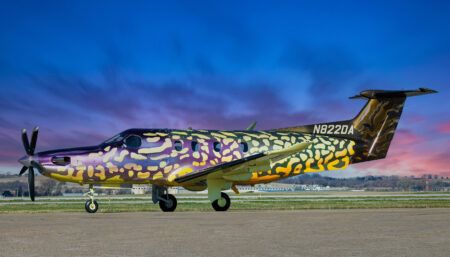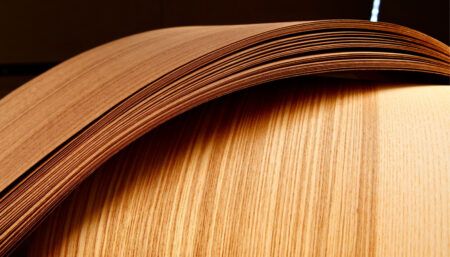Caroline Larmaraud, the leader of Dassault’s Design Studio in Paris, France, discusses the making of the Falcon 2000LXS demo aircraft, and what unites Falcon customer
What is your position and how long have you been working with Dassault?
I joined Dassault Aviation in 1998 as an interior designer. At that time, the company was starting to conduct research into new cabin technology and styling techniques to further enhance passengers’ sense of spaciousness and comfort. This led to the creation a few years ago of the Dassault Design Studio – a team of a dozen bright and talented designers in France and the USA, working together to enhance the customer’s cabin experience. Today, I supervise the French portion of the design team.
What is your background?
I studied interior architecture and design at the Camondo School in Paris, one of Europe’s leading schools of design. I first worked in architecture, learning how to optimize space, how to play with light and seizing the importance of ergonomics. This first job also required considerable precision and close attention to detail and finishing. With Dassault, I also had the opportunity to collaborate with famous designers including Eisdgaard, Munch, Pinto and British architect Sir Norman Foster, who had been hired by customers to collaborate on their aircraft cabin design. I gained invaluable experience and inspiration working with them.
What was entailed in designing the cabin interior for the Falcon 2000LXS?
The year we were assigned to design the 2000LXS demo interior, the team also had to work on 7X and 900LX demo aircraft. The design team took it as an internal challenge and it was decided to have each designer in charge focus on a different facet of each aircraft.
For the 2000LXS, my task was to work out the finishing details. I opted to work on the seams, with the idea of obtaining a rendering close to what you find in the yacht industry. The seams are really only there to enhance the shape of the cabinetry and the appearance of the leather upholstery, for which we picked two contrasting colors. I’ve always been attracted by beautiful things. By ‘things’, I mean those objects that require long hours of work and true skill, the tradition of French craftsmanship. The 2000LXS interior design job was a great opportunity to give concrete expression to this passion.
What were the major challenges and how did you overcome them?
The challenge is the same each time we design an interior for a demo aircraft. The aircraft is not built for any particular customer, so the interior has to be distinctive while reflecting all the attributes of the Dassault brand – elegance, style, timelessness and refinement. That’s what I sought to demonstrate in this Falcon 2000LXS interior.
Are there any particular demands that Falcon customers tend to make on a consistent basis?
Flying on a business jet can be long and strenuous, especially on intercontinental trips. Cabin layout and entertainment and communication system integration are crucial to helping passengers work, dine and rest comfortably during these long flights. Our challenge is to make sure we design the right cabin to meet the expectations and flying habits of each particular customer.
Quietness on board is a constant demand; how do you deal with this from a design perspective?
Very often, passengers describe Falcon cabins as ‘library quiet’, and this is exactly what they are. On the manufacturing side, the company invests continuously in research and development to ensure that the aircraft and cabin structure are as quiet as can be.
The cabin sound level on the Falcon 2000LXS, for example, is 2dB lower than the aircraft from which it is derived. Meanwhile at the conceptual end, the Dassault Design Studio works closely with suppliers to qualify micro-perforated fabrics and panels and other advanced materials that can endow headliners, valance and window shades and other cabin furnishings with considerably enhanced soundproofing properties. The studio is also looking at switching away from certain materials – such as wood customarily used in cabin dividers – where this can provide a soundproofing advantage.
What is your dream project for a cabin interior?
My team in France gets at least 30 new dreams to accomplish each year, for our customers! And with the constant improvement in both materials and technology, we can make almost any dream come true. Our customers include many important and successful people – CEOs, entrepreneurs, sportsmen – and some can be very demanding. It’s extremely rewarding to be able to help them define the Falcon of their dreams and such a great feeling when on the day of delivery the customer tells us, “Thank you so much, this is just the aircraft I was dreaming of!”
This interview was first published in Dassault’s internal magazine.





